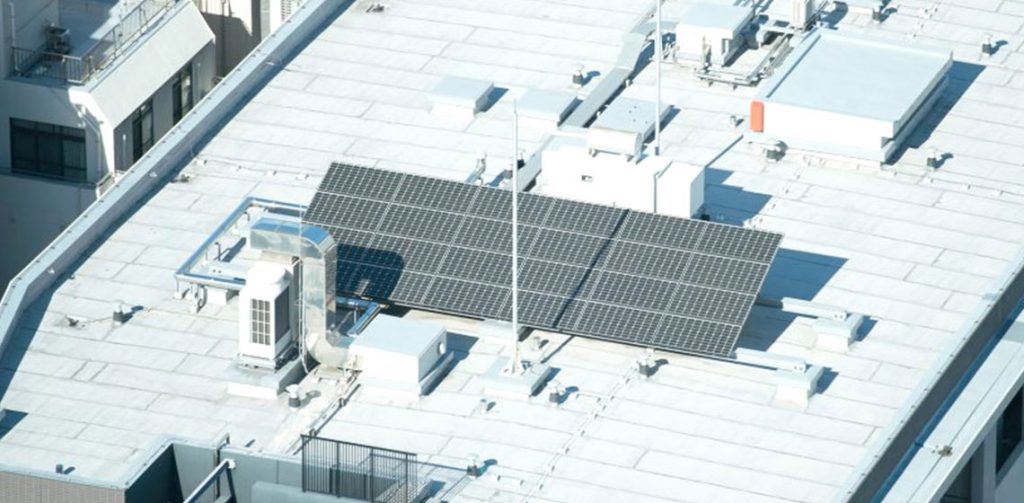
As the world continues to prioritize sustainability and environmental consciousness, the construction industry is undergoing a significant shift toward eco-friendly practices. Commercial buildings, in particular, have a unique opportunity to embrace sustainable solutions for their roofing systems. In this post, we will explore various eco-friendly materials and techniques that can be employed in commercial roof installation. By adopting these sustainable practices, businesses can reduce their carbon footprint, improve energy efficiency, and contribute to a healthier environment. Read on to discover the key elements of a greener future.
Reflective Roofing Materials
One of the most effective ways to enhance energy efficiency in commercial roofing is by using reflective materials. Traditional dark-colored roofs absorb heat, leading to increased cooling demands and higher energy consumption. By opting for reflective roofing materials such as white membranes or cool roof coatings, commercial buildings can significantly reduce their cooling needs. These materials reflect sunlight, minimizing heat absorption and maintaining lower internal temperatures. As a result, businesses can reduce their energy usage, lower utility costs, and contribute to a more comfortable indoor environment.
Green Roof Systems
Green roof systems are gaining popularity in commercial buildings due to their numerous environmental benefits. A green roof consists of a living vegetation layer, typically supported by a waterproof membrane and other structural components. These roofs provide natural insulation, reducing the need for excessive heating or cooling. They also improve air quality by absorbing carbon dioxide and releasing oxygen. Additionally, green roofs help manage stormwater runoff by absorbing and filtering rainwater, reducing stress on local drainage systems. Implementing green roof systems in commercial buildings can enhance sustainability, create aesthetic appeal, and provide an urban oasis for employees and visitors.
Recycled and Sustainable Roofing Materials
When it comes to commercial roofing, using recycled and sustainable materials is a crucial step towards achieving eco-friendliness. Materials such as recycled metal, rubber, and plastic can be repurposed to create durable and long-lasting roofs. Metal roofing, for example, offers excellent durability, energy efficiency, and recyclability. Likewise, rubber and plastic roofing materials derived from recycled sources provide a sustainable alternative to traditional options. By incorporating recycled and sustainable materials into commercial roof installations, businesses can minimize waste, conserve natural resources, and support the circular economy.
Solar Photovoltaic Systems
Solar energy is a clean and renewable source of power, making solar photovoltaic (PV) systems an ideal addition to commercial roofing. These systems consist of solar panels that convert sunlight into electricity, which can be used to power various building operations. By harnessing solar energy, businesses can reduce their dependence on conventional energy sources, lower utility bills, and decrease greenhouse gas emissions. Commercial buildings with ample roof space can maximize their sustainability efforts by integrating solar PV systems into their roofing design.
Rainwater Harvesting
Rainwater harvesting is a sustainable technique that involves collecting and storing rainwater for later use. Commercial buildings can utilize their roofing systems to capture rainwater, which can then be used for irrigation, flushing toilets, or other non-potable purposes. By implementing rainwater harvesting systems, businesses can reduce the strain on municipal water supplies and conserve this precious resource. Properly designed and maintained rainwater harvesting systems can contribute to water efficiency and sustainability in commercial buildings.
Insulation and Ventilation
Efficient insulation and proper ventilation are key components of sustainable commercial roofing systems. Well-insulated roofs help regulate indoor temperatures, reducing the need for excessive heating or cooling. This results in lower energy consumption and increased comfort for occupants. Adequate ventilation in the roof space prevents the buildup of heat and moisture, which can lead to structural damage and compromised energy efficiency. By prioritizing insulation and ventilation during commercial roof installation, businesses can enhance energy efficiency, minimize thermal loss, and create a more sustainable building envelope.
Maintenance and Regular Inspections
To ensure the longevity and continued sustainability of commercial roofing systems, proper maintenance and regular inspections are crucial. Establishing a proactive maintenance routine helps identify and address potential issues before they escalate into costly repairs or replacements. Conducting regular inspections allows for the early detection of leaks, damage, or deterioration. Promptly addressing any issues not only extends the lifespan of the roof but also prevents energy inefficiencies and potential environmental hazards. By implementing a comprehensive maintenance plan and scheduling routine inspections, businesses can uphold the sustainability of their commercial roofing systems and avoid unnecessary waste or environmental impact.
Sustainable solutions for commercial building roofing are no longer an option but a necessity in today’s environmentally conscious world. By incorporating eco-friendly materials and techniques into commercial roof installation, businesses can reduce their environmental impact, improve energy efficiency, and contribute to a greener future. Reflective roofing materials, green roof systems, recycled and sustainable materials, solar photovoltaic systems, rainwater harvesting, insulation, and ventilation all play integral roles in achieving sustainable commercial roofing. By embracing these practices, commercial buildings can showcase their commitment to sustainability while reaping the long-term benefits of reduced energy consumption and operational costs. Together, let’s pave the way for a more sustainable and eco-friendly approach to commercial roofing systems.

